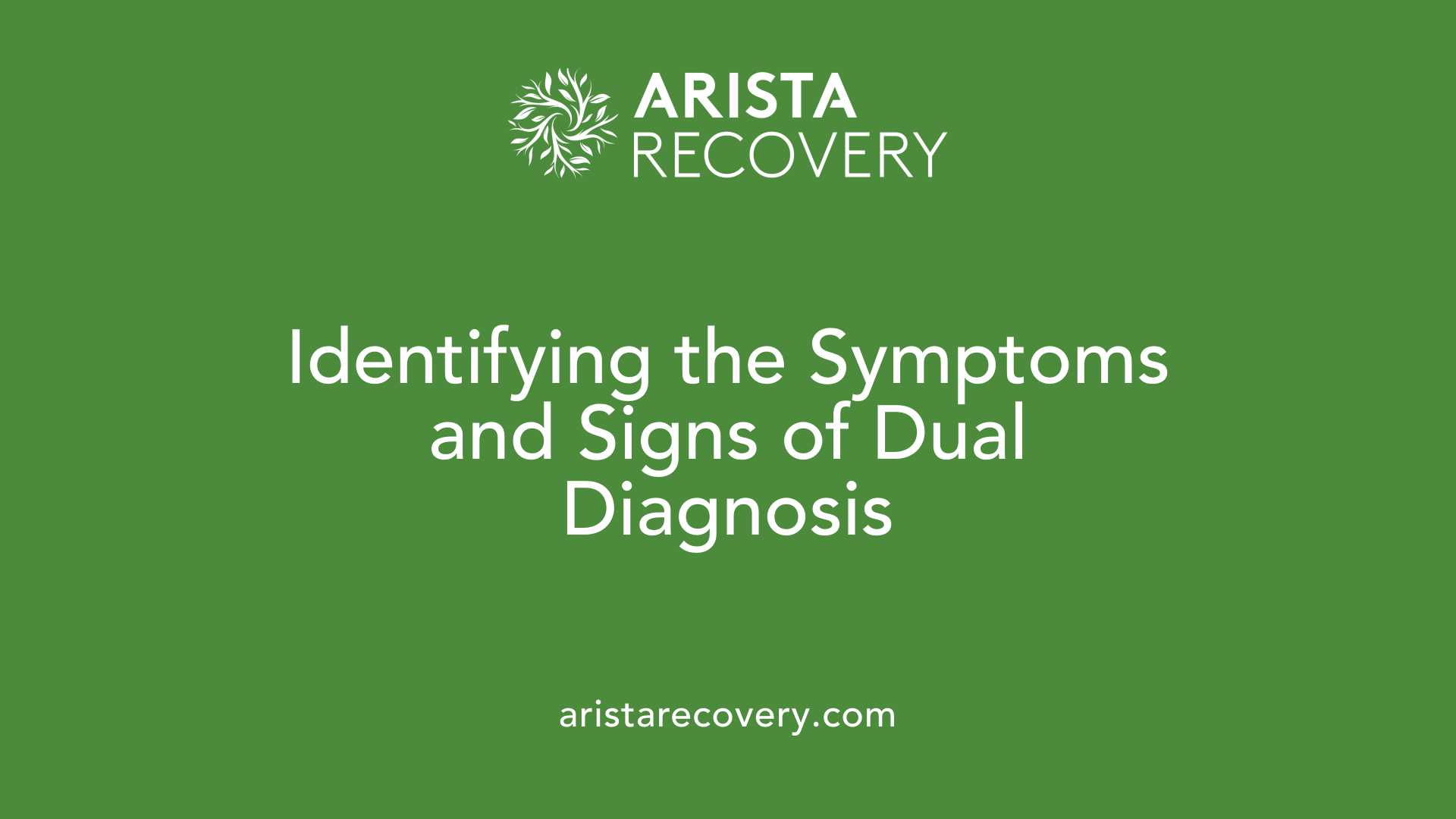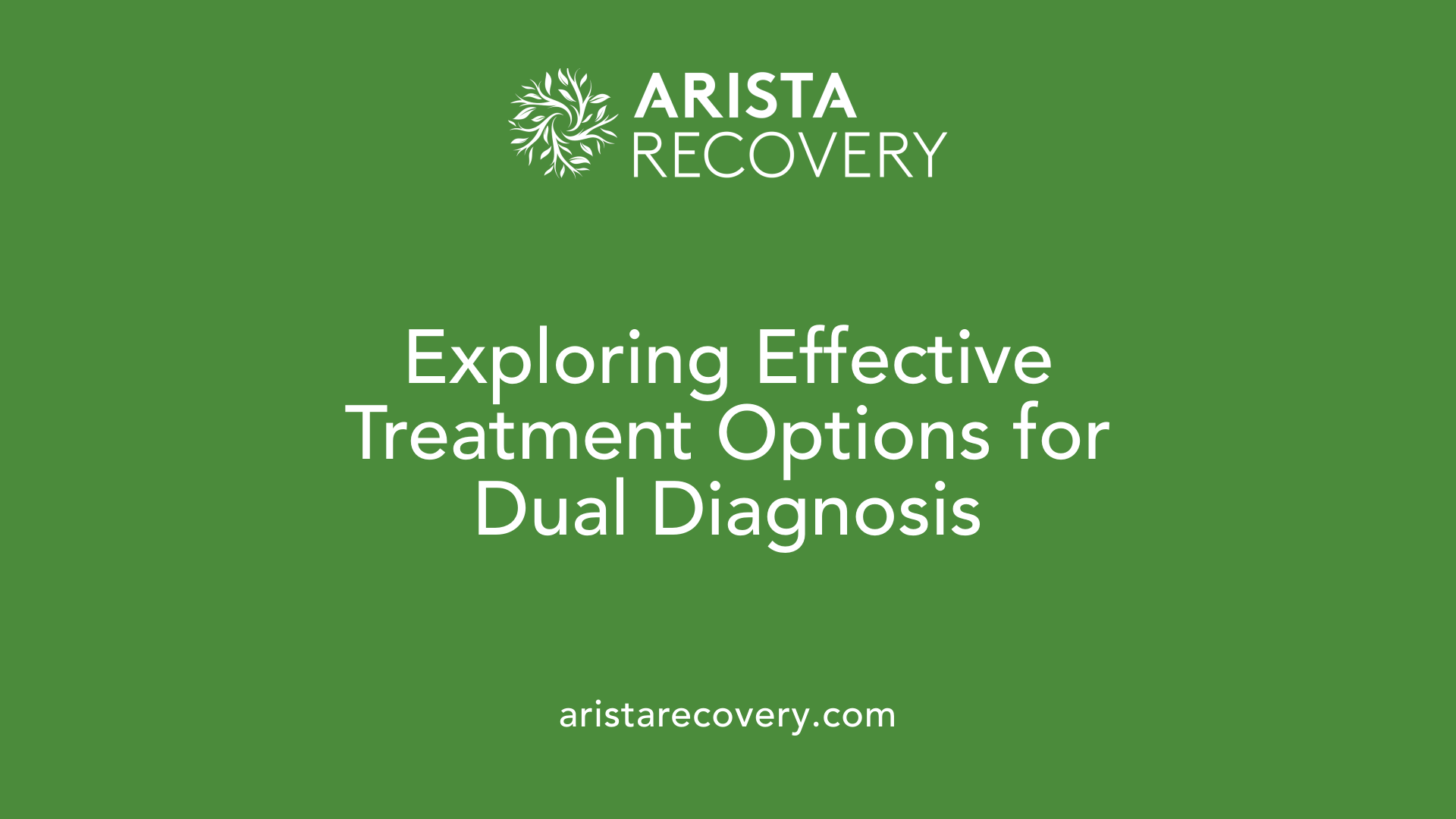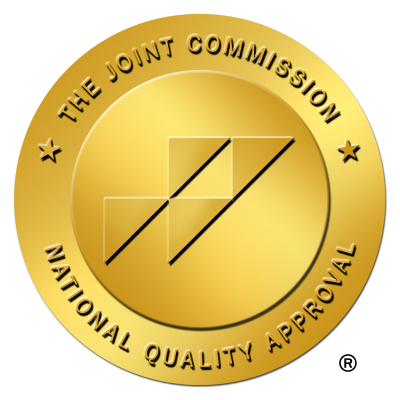The Role of Medication in Dual-Diagnosis Treatment

Introduction to Dual-Diagnosis Treatment
Dual diagnosis refers to the concurrent occurrence of a mental disorder and a substance use disorder (SUD). This co-occurrence presents unique challenges that complicate treatment approaches due to the intertwined nature of these conditions. In recent years, treatments integrating both pharmacological and psychosocial strategies have proven essential for addressing dual diagnosis. This comprehensive approach ensures that both mental illness and substance misuse are managed effectively, highlighting the crucial role of medication in bridging the gap towards recovery.
Understanding Dual Diagnosis

What is dual diagnosis in mental health?
Dual diagnosis refers to the simultaneous presence of a mental health disorder and a substance use disorder (SUD). This coexistence can complicate diagnosis and treatment, as each disorder can exacerbate the symptoms and challenges of the other. For instance, individuals with PTSD, particularly veterans, may turn to substances as a form of self-medication, leading to higher rates of substance misuse.
This condition, also known as co-occurring disorder, is prevalent in society. Research highlights that approximately 50% of those with a substance use disorder are also grappling with a mental health issue. The interrelatedness of these disorders requires an integrated treatment approach, which means that addressing one condition without considering the other often results in worse outcomes.
Prevalence and significance of dual diagnosis
The significance of dual diagnosis cannot be understated. An estimated 9.2 million American adults are affected by these co-occurring disorders, and statistics reveal that nearly 20% of individuals with mental illness also suffer from a substance use disorder. Highly concerning, about 37% of alcohol abusers and 53% of drug abusers have at least one serious mental illness.
Given the complexity of dual diagnosis, effective treatment plans must be personalized, incorporating behavioral therapies, medication, and support systems tailored to the individual’s specific conditions. Research indicates that without proper integrated treatment, individuals face challenges such as relapse, rehospitalization, and a cycle of worsening mental health. Thus, understanding and addressing dual diagnosis is crucial for improving recovery outcomes and support for individuals in need.
Symptoms and Signs of Dual Diagnosis

What are the symptoms of dual diagnosis?
Symptoms of dual diagnosis, which refers to the coexistence of a mental health disorder and a substance use disorder, can be complex and varied. Individuals may experience a range of symptoms that overlap both conditions, such as:
- Mood Swings: Rapid changes in emotional states are common, reflecting instability in mental health.
- Confusion and Anxiety: Cognitive dysfunction and persistent anxiety are prevalent, making it challenging to engage in everyday tasks.
- Difficulty Functioning: Individuals may struggle with daily responsibilities due to impaired judgment and emotional regulation.
Alongside these mental health symptoms, signs indicative of substance use disorders may include:
- Withdrawal from Social Connections: A noticeable decrease in social interaction and support systems.
- Sudden Behavioral Changes: Erratic or unpredictable behavior may emerge, sometimes linked to substance use.
- Dependence on Substances: A compulsion to use substances as a coping mechanism to mitigate mental health symptoms is often observed.
Other critical warning signs include:
- Pre-existing Mental Health Issues: Previous diagnoses of mental disorders can hint at potential substance misuse following their onset.
- Erratic Behavior: Changes in routine or personality that friends and family may notice.
- Physical Health Changes: Declines in physical health or hygiene can signal deeper issues with substance use.
Complexity and variability of symptoms
The complexity of dual diagnosis lies in the interplay between mental health symptoms and substance use behaviors. For instance, individuals may misuse alcohol or drugs as a form of self-medication to ease anxiety or depressive symptoms. This often leads to exacerbated conditions, creating a cycle that's challenging to break.
Treatment for dual diagnosis typically focuses on addressing both issues simultaneously through a combination of therapy, medication, and support. This integrated approach is vital for fostering recovery and minimizing the chances of relapse.
Treatment Options for Dual Diagnosis

What are the treatment options for dual diagnosis?
Treatment options for dual diagnosis, characterized by the presence of both a mental health disorder and a substance use disorder, typically follow an integrated approach. This involves employing a range of strategies that address both conditions concurrently, ensuring that neither is overlooked.
Integrated Treatment Approaches
Effective treatment plans often consist of:
- Behavioral Therapies:
- Cognitive Behavioral Therapy (CBT): Aims to shift negative thought patterns that contribute to both mental health issues and substance use.
- Dialectical Behavior Therapy (DBT): Focuses on emotional regulation, mindfulness, and interpersonal skills.
- Medication Management: Medication plays a fundamental role in managing symptoms and reducing cravings. Common prescriptions include:
- Antidepressants like SSRIs for treating depression.
- Anxiolytics to address anxiety disorders.
- Medications for addiction such as bupropion, which can treat depressive symptoms while aiding in reducing withdrawal effects from substances.
- Support Groups: Peer-led groups provide crucial emotional support, helping individuals share their experiences and maintain sobriety in a community environment.
Importance of Simultaneous Care
Processing both issues at the same time fosters a comprehensive recovery. Studies show that treating mental health and substance use disorders together leads to better long-term outcomes compared to treating them separately.
| Treatment Component | Purpose | Examples |
|---|---|---|
| Behavioral Therapies | Modify harmful behaviors and thought patterns | CBT, DBT |
| Medication | Address mental health symptoms and substance cravings | SSRIs, bupropion |
| Support Groups | Emotional and peer support | Alcoholics Anonymous, Narcotics Anonymous |
| Integrated Treatment Models | Holistic care for dual diagnosis | Integrated Dual Disorder Treatment (IDDT) |
A tailored treatment plan that accounts for the unique needs of individuals is essential for achieving better long-term outcomes.
Role of Medication in Dual-Diagnosis Treatment

Purpose and Importance of Medication
In dual diagnosis treatment, medication serves as a crucial element in managing both mental health symptoms and supporting recovery from substance use disorders (SUDs). The primary purpose of medications is to influence brain chemicals, helping regulate emotions and thought patterns. This is especially vital as individuals with co-occurring disorders often experience heightened symptoms that complicate both diagnosis and treatment.
The interconnectedness between mental health issues and substance abuse means that effective pharmacotherapy can alleviate severe symptoms, paving the way for patients to engage more fully in therapeutic processes. Moreover, customized medication plans tailored to the specific needs of individuals are essential for efficacy, ensuring that adverse effects are minimized.
How Medication Supports Treatment
Medication aids in stabilizing mental health conditions, which is particularly important during detox periods when patients are most vulnerable to relapse. For instance, antidepressants, anxiolytics, and mood stabilizers can ameliorate mental symptoms, thus allowing individuals to focus on their recovery from substance dependence.
Incorporating medication into a dual diagnosis treatment plan should be a dynamic process, with ongoing adjustments as needed. Treatment models such as Integrated Dual Disorder Treatment (IDDT) emphasize the need for combining pharmacotherapy with behavioral therapies, such as Cognitive Behavioral Therapy (CBT) and Dialectical Behavior Therapy (DBT). This integrated approach has shown promise in improving long-term recovery outcomes, making effective medication management a fundamental aspect of dual diagnosis care.
The combination of medication, therapy, and supportive interventions addresses the physiological and psychological dimensions of addiction, ultimately enhancing recovery rates for those with a dual diagnosis.
Medication Management in Dual Diagnosis
What is the significance of medication management in dual diagnosis treatment?
Medication management plays a crucial role in dual diagnosis treatment, addressing both substance use disorders (SUD) and accompanying mental health issues. It involves careful monitoring and adjustment of medications to ensure patients receive the optimal types and dosages essential for their specific conditions.
Effective medication management is vital for maximizing therapeutic benefits while minimizing potential side effects. Given that nearly 20% of individuals with mental illness also have a substance use disorder, the complexity of treating dual diagnoses cannot be overstated. Treatment plans must be personalized to account for the patient’s age, substance misuse patterns, and mental health challenges.
Integrating medication management with psychosocial interventions like Cognitive Behavioral Therapy (CBT) and Dialectical Behavior Therapy (DBT) can lead to enhanced recovery outcomes. This dual approach fosters better emotional support, enhancing the patient’s relationship with their treatment and medication.
What are the challenges in effective medication use for dual diagnosis?
Despite its importance, effective medication management in dual diagnosis faces several challenges. One significant challenge includes potential interactions between medications for mental health conditions and those for SUD, necessitating careful selection and monitoring.
Patients may also experience stigma or resistance towards taking psychiatric medications, complicating adherence to treatment plans. Additionally, many individuals might engage in self-medication, further complicating the management of both conditions. These barriers highlight the need for comprehensive treatment strategies that not only focus on pharmacotherapy but also integrate lifestyle changes and support systems, ensuring patients receive well-rounded care.
Clinical Guidelines for Medication Use
What are the clinical guidelines for medication use in dual diagnosis?
Clinical guidelines for treating dual diagnosis underscore the importance of creating individualized treatment plans. These plans should cater specifically to the unique needs of individuals facing both mental health and substance use disorders.
Individualized Treatment Plans
- Personalized Approach: Each patient's treatment should address their specific substance misuse patterns and mental health conditions.
- Shared Decision-Making: It's crucial for healthcare providers to involve patients in treatment decisions, ensuring they understand the risks and benefits of prescribed medications.
Integration with Other Treatments
- Comprehensive Recovery: Medication management should go hand-in-hand with psychosocial, behavioral, and cognitive interventions to achieve effective recovery outcomes.
- Evidence-Based Practices: Research supports the concurrent treatment of both disorders, highlighting the need for medication for mental health issues to persist even during ongoing substance use.
- Therapeutic Modalities: Integrating behavioral therapies like Cognitive Behavioral Therapy (CBT) and motivational interviewing can effectively complement pharmacotherapy.
Continuous monitoring of patient progress and coordination among various healthcare providers is essential to manage complications effectively. This robust approach maximizes the potential for positive treatment outcomes for individuals navigating the complexities of dual diagnosis.
| Treatment Aspect | Importance | Recommended Practices |
|---|---|---|
| Individualization | Tailored to each person's needs | Assess mental health and substance use patterns |
| Integrated Approaches | Combines medication with therapy for effectiveness | Use CBT, motivational interviewing, and ongoing support |
| Monitoring | Regularly track progress to optimize outcomes | Coordinate care among different healthcare providers |
By adhering to these guidelines, treatment can more effectively address the intertwined nature of mental health and substance use disorders.
Specific Medications in Dual-Diagnosis Treatment
What medications are used for dual diagnosis?
Medications for dual diagnosis treatment focus on tackling both mental health disorders and substance use disorders simultaneously. These can include a range of pharmacological options tailored to individual needs. Commonly prescribed medications consist of:
- Antidepressants (e.g., SSRIs, Bupropion)
- Antipsychotics
- Mood stabilizers
For instance, Bupropion is effective for treating depression and can also help with nicotine dependence. Another example, SSRIs, have shown promise in managing anxiety and depressive symptoms in individuals grappling with substance use disorders. Additionally, medications like naltrexone are beneficial in reducing cravings associated with alcohol or opioid dependence.
Effectiveness and purposes
The effectiveness of these medications in dual diagnosis cases necessitates an integrated treatment approach. Combining these pharmacological solutions with behavioral therapies leads to improved recovery rates. This dual focus not only addresses the physiological aspects of addiction but also mitigates psychological symptoms of concurrent mental health disorders.
Overall, the prudent selection of medications, alongside therapy and other supportive measures, is crucial for effective management and successful long-term recovery in individuals facing dual diagnosis challenges.
| Medication Type | Examples | Treatment Purpose |
|---|---|---|
| Antidepressants | SSRIs, Bupropion | Treat depression, manage anxiety |
| Antipsychotics | Clozapine | Address severe mental illnesses like schizophrenia |
| Mood Stabilizers | Lithium | Stabilize mood, particularly in bipolar disorder |
| Addiction Medications | Naltrexone | Reduce cravings for substances like alcohol/opioids |
The Evolution of Dual-Diagnosis Treatment
How do dual diagnosis and co-occurring disorders differ?
Dual diagnosis specifically refers to the simultaneous diagnosis of a mental health disorder and a substance use disorder. In contrast, co-occurring disorders entail any combination of two or more disorders, which can include additional medical conditions. While both concepts address the overlap between mental health and substance abuse, co-occurring disorders emphasize the direct relationship where a mental health disorder may develop due to substance use or influence addiction.
Understanding these distinctions is vital, as individuals with dual diagnoses face unique treatment needs and often require integrated care. The concept of dual diagnosis emerged in the late 1980s, highlighting the importance of recognizing and addressing these overlapping conditions.
Historical context
The recognition of dual diagnosis has evolved significantly since its conceptual inception. Historically, mental health issues were often treated separately from substance use disorders. This separation led to increased challenges, including treatment noncompliance and higher rates of relapse among patients.
Emerging research indicated the prevalence of co-occurring conditions, prompting a shift toward integrated treatment approaches. The growth of evidence-based practices, such as Cognitive Behavioral Therapy (CBT) and Integrated Dual Disorder Treatment (IDDT), has been crucial.
Developments in treatment models
Recent advancements emphasize the necessity for comprehensive treatment plans. Contemporary approaches commit to addressing both mental health and substance use disorders simultaneously. This holistic integration incorporates medication management for both conditions, reflecting a broader understanding of the chronic nature of these illnesses.
The focus on individualized treatment has led to improved outcomes for affected individuals, showcasing the effectiveness of combining medication with psychosocial interventions. The evolution of treatment models continues to respond to the complex needs of those experiencing dual diagnoses, ensuring that interventions not only treat symptoms but also target the root causes of addiction and mental health disorders.
Comprehensive Framework for Addressing Dual Diagnosis
Integration of pharmacological and psychosocial treatments
The treatment of dual diagnosis—coexisting mental health disorders and substance use disorders—must be holistic and integrated. This means that effective management requires a carefully designed treatment plan, incorporating both pharmacological and psychosocial interventions.
Pharmacological Treatments:
Medications play a pivotal role in recovery by addressing the unique symptoms of both substance use disorders and mental health conditions. For instance:
| Medication Type | Purpose | Examples |
|---|---|---|
| Opioid Dependence | Normalize brain chemistry, reduce cravings | Buprenorphine, Methadone |
| Alcohol Dependence | Manage withdrawal symptoms, reduce use | Naltrexone, Acamprosate |
| Mental Health Conditions | Alleviate symptoms of mood and anxiety disorders | SSRIs, Antipsychotics |
The integration of these medications with therapies like Cognitive Behavioral Therapy (CBT) and Dialectical Behavior Therapy (DBT) helps restore emotional balance and improves coping strategies.
How do medications aid recovery in dual diagnosis?
Medications aid recovery in dual diagnosis by addressing both the mental health disorder and the substance use disorder (SUD) simultaneously, which is crucial for effective treatment. For substance use disorders, medications such as buprenorphine, methadone, and naltrexone help normalize brain chemistry and reduce cravings. In conjunction with behavioral therapies like Cognitive Behavioral Therapy (CBT) and Dialectical Behavior Therapy (DBT), these medications can significantly improve overall functioning and emotional stability. Additionally, psychiatric medications such as antidepressants and antipsychotics manage symptoms of mental health conditions, enhancing treatment outcomes. Ultimately, a comprehensive approach that includes medication management, behavioral therapy, and support from groups fosters a more holistic recovery process for individuals facing dual diagnosis.
Current best practices
Current best practices advocate for an Integrated Dual Disorder Treatment (IDDT) model, which treats both disorders concurrently, recognizing their interconnectedness. This strategy encompasses:
- Personalized Treatment Plans: Tailored to individual needs, taking into account specific mental illnesses and substance use.
- Holistic Approaches: Incorporating lifestyle changes, supportive counseling, and community resources to enhance recovery.
- Monitoring and Adjustments: Frequent assessments to adapt treatment strategies as necessary, ensuring efficacy and addressing any complications that arise.
By combining these elements, treatment programs not only provide immediate relief but also promote long-term recovery and resilience.
This integrated framework is essential for effectively combating the unique challenges posed by dual diagnosis, leading to improved health outcomes and overall quality of life for affected individuals.
Challenges and Future Directions in Dual-Diagnosis Treatment
What are the ongoing research and developments in dual-diagnosis treatment?
Ongoing research into dual diagnosis treatment focuses on refining integrated interventions that address both mental health and substance use disorders concurrently. Studies are examining the effectiveness of various medications, like Bupropion, which can target withdrawal symptoms and depression simultaneously. Understanding the neurobiological connections between mental health issues and substance use can yield new therapeutic avenues.
Additionally, evidence-based practices such as Integrated Dual Disorder Treatment (IDDT) are gaining traction. These practices aim to provide comprehensive care that considers the patient’s entire context, ensuring alignment between medication and therapy, enhancing recovery outcomes.
What challenges are specific to dual-diagnosis cases?
Several significant challenges complicate the management of dual diagnoses:
- Stigmatization: Individuals with dual diagnoses often face stigma, which can deter them from seeking help.
- Complexity of Symptoms: Symptoms from both disorders can overlap, making accurate diagnosis difficult and delaying treatment.
- Medication Interactions: Patients may require tailored medication management strategies to avoid adverse interactions, requiring meticulous oversight.
- Self-Medication: Many individuals engage in self-medication behaviors, which can exacerbate their mental health conditions over time.
The need for holistic approaches that incorporate ongoing dialogue and support in the community is critical to overcoming these hurdles.
Behavioral Therapies in Dual-Diagnosis Treatment
What are Popular Therapeutic Approaches?
Effective behavioral therapies play a critical role in treating individuals with dual diagnoses. Popular approaches include:
- Cognitive Behavioral Therapy (CBT): Focuses on changing negative thought patterns and behaviors associated with both mental health disorders and substance use.
- Dialectical Behavior Therapy (DBT): Incorporates mindfulness and emotional regulation, emphasizing acceptance and change.
- Assertive Community Treatment (ACT): Provides comprehensive, community-based support, ensuring that patients receive personalized and ongoing care.
- Contingency Management (CM): Utilizes a reward system to reinforce positive behaviors such as abstaining from substances.
How Does Therapy Synergize with Medication?
The integration of therapy and medication is essential in managing dual diagnoses. Medications are prescribed to alleviate withdrawal symptoms and co-occurring mental health symptoms. This alleviation allows individuals to engage more effectively in therapeutic processes.
Additionally, treatment regimens like Integrated Dual Disorder Treatment (IDDT) emphasize the simultaneous treatment of both conditions. By combining behavioral therapies with medications tailored to specific mental health issues, patients can achieve improved recovery outcomes and better management of their conditions.
| Therapeutic Approach | Focus | Potential Benefits |
|---|---|---|
| Cognitive Behavioral Therapy (CBT) | Thought patterns and behaviors | Reduces anxiety, improves coping strategies |
| Dialectical Behavior Therapy (DBT) | Emotional regulation | Enhances mindfulness, reduces self-destructive behaviors |
| Assertive Community Treatment (ACT) | Community-based support | Provides personal, continuous care |
| Contingency Management (CM) | Reward for positive behavior | Encourages abstinence, increases engagement in treatment |
Ultimately, effective dual diagnosis treatment intertwines these therapies with medication management to optimize recovery prospects.
Holistic Treatment Approaches
Role of Lifestyle Changes
Holistic treatment for dual diagnosis recognizes that lifestyle changes are pivotal in achieving lasting recovery. These changes may include:
- Nutrition: A balanced diet can impact mental health and overall wellness, aiding in recovery.
- Exercise: Regular physical activity is known to reduce anxiety and depression symptoms.
- Sleep Hygiene: Establishing good sleep practices can help restore mental balance and improve mood stability.
- Mindfulness Practices: Techniques such as meditation and yoga can enhance emotional regulation and stress management.
Integration with Traditional Treatments
Holistic approaches do not replace conventional treatments but rather complement them. By integrating these with traditional methods like medication management and therapy, patients may experience:
- Improved Engagement: With increased wellness from lifestyle adjustments, patients often engage better in therapy and other recovery processes.
- Enhanced Efficacy of Medications: Healthy lifestyle choices may improve how well medications perform, potentially reducing side effects.
- Comprehensive Support: Holistic care encompasses mental, physical, and emotional aspects of recovery, providing a robust framework against relapse.
Incorporating holistic practices can significantly improve outcomes for individuals facing the challenges of dual diagnosis, enhancing both their mental health and substance recovery journeys.
Policy and Community Considerations

Role of Social Factors
The interplay between substance use disorders and mental health conditions is significantly influenced by social factors. Economic status, access to healthcare, education, and community support systems all contribute to the well-being of individuals with dual diagnoses. Many individuals may find themselves on the fringes of society, facing barriers that impede access to effective treatment.
Advocating for policies that address these disparities can enhance recovery outcomes. This may include improving access to quality mental health services, offering affordable housing, and establishing job training programs that empower individuals to reintegrate into their communities successfully.
Development of Supportive Community Practices
Creating a supportive environment within the community is integral to the recovery of those with dual diagnoses. Community-based programs that promote peer support, education about addiction and mental health, and recreational activities can foster social connections, reducing the sense of isolation experienced by many.
Moreover, these programs can encourage shared experiences and collective healing by incorporating family and friends, leading to a more structured support network. Implementing policies that fund and promote these community practices will not only address the immediate treatment needs but also create a foundation for long-term recovery and stability.
Final Thoughts on Medication in Dual-Diagnosis Treatment
Medication plays an undeniably crucial role in dual-diagnosis treatment, offering symptomatic relief and an essential foundation for broader recovery strategies. By carefully integrating medication management with various therapeutic approaches, individuals with dual diagnosis can achieve improved outcomes. The journey toward recovery is complex and requires the collaboration of healthcare providers, patients, and their support systems. As research continues to evolve, the integration of new medications and interventions will undoubtedly enhance the efficacy of dual-diagnosis treatments, offering hope and improved quality of life for those affected by these challenging conditions.
References
- Dual Diagnosis - MedlinePlus
- Treatment for Substance Use Disorder With Co-Occurring Mental ...
- Effective Strategies for Managing Dual Diagnosis
- Substance Use and Co-Occurring Mental Disorders
- Medication Management | Dual Diagnosis Treatment
- Pharmacotherapy in dual diagnosis | Advances in Psychiatric ...
- The Role of Dual Diagnosis Treatment in Addiction
- Deal with a Dual Diagnosis: Substance Abuse & Mental Health
You’re not alone in this.
When mental health challenges and addiction intersect, it can feel isolating. At Arista, we offer compassionate, evidence-based, and trauma-informed care to help you heal, grow, and move forward.
You’re not alone in this.
When mental health challenges and addiction intersect, it can feel isolating. At Arista, we offer compassionate, evidence-based, and trauma-informed care to help you heal, grow, and move forward.
Support that moves with you.
You’ve taken a brave first step. At Arista Recovery, we’re here to help you continue with best-in-class care designed for long-term healing and support.
.webp)






